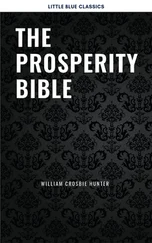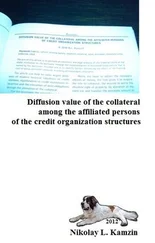That child is me. But why is she me? … [My point of view] would be as inaccessible to her … as hers is now to me. … There are presumably adventures that she—that is that I—can’t undergo and still continue to be herself. Would I then be someone else? Goldstein repeatedly juxtaposes nouns and pronouns in the first and third person: that child … me; she … I … herself; I … someone else. The syntactic confusion about which grammatical person belongs in which phrase reflects our intellectual confusion about the very meaning of the concept “person.” She also plays with to be, the quintessentially existential verb, to engage our existential puzzlement: Would I then be someone else or would I just no longer be? … Would there then be someone else, or would there be no one?
frilly white pinafore. The use of an old-fashioned word for an old-fashioned garment helps date the snapshot for us, without the cliché faded photograph.
The sister whose hand I am clutching in the picture is dead. After eighteen sentences that mix wistful nostalgia with abstract philosophizing, the reverie is punctured by a stark revelation. However painful it must have been to predicate the harsh word dead of a beloved sister, no euphemism— has passed away, is no longer with us— could have ended that sentence. The topic of the discussion is how we struggle to reconcile the indubitable fact of death with our incomprehension of the possibility that a person can no longer exist. Our linguistic ancestors parlayed that incomprehension into euphemisms like passed on in which death consists of a journey to a remote location. Had Goldstein settled for these weasel words, she would have undermined her analysis before it began.
I wonder every day whether she still exists. A person whom one has loved seems altogether too significant a thing to simply vanish altogether from the world. A person whom one loves is a world, just as one knows oneself to be a world. How can worlds like these simply cease altogether? This passage fills my eyes every time I read it, and not just because it is about a sister-in-law I will never meet. With a spare restatement of what philosophers call the hard problem of consciousness ( A person … is a world, just as one knows oneself to be a world ), Goldstein creates an effect that is richly emotional. The puzzlement in having to make sense of this abstract philosophical conundrum mingles with the poignancy of having to come to terms with the loss of someone we love. It is not just the selfish realization that we have been robbed of their third-person company, but the unselfish realization that they have been robbed of their first-person experience.
The passage also reminds us of the overlap in techniques for writing fiction and nonfiction. The interweaving of the personal and the philosophical in this excerpt is being used as an expository device, to help us understand the issues that Spinoza wrote about. But it is also a theme that runs through Goldstein’s fiction, namely that the obsessions of academic philosophy—personal identity, consciousness, truth, will, meaning, morality—are of a piece with the obsessions of human beings as they try to make sense of their lives.

MAURICE SENDAK, AUTHOR OF SPLENDID NIGHTMARES, DIES AT 83
Maurice Sendak, widely considered the most important children’s book artist of the 20th century, who wrenched the picture book out of the safe, sanitized world of the nursery and plunged it into the dark, terrifying, and hauntingly beautiful recesses of the human psyche, died on Tuesday in Danbury, Conn. …
Roundly praised, intermittently censored, and occasionally eaten, Mr. Sendak’s books were essential ingredients of childhood for the generation born after 1960 or thereabouts, and in turn for their children.
PAULINE PHILLIPS, FLINTY ADVISER TO MILLIONS AS DEAR ABBY, DIES AT 94
Dear Abby: My wife sleeps in the raw. Then she showers, brushes her teeth and fixes our breakfast—still in the buff. We’re newlyweds and there are just the two of us, so I suppose there’s really nothing wrong with it. What do you think?—Ed
Dear Ed: It’s O.K. with me. But tell her to put on an apron when she’s frying bacon.
Pauline Phillips, a California housewife who nearly 60 years ago, seeking something more meaningful than mah-jongg, transformed herself into the syndicated columnist Dear Abby—and in so doing became a trusted, tart-tongued adviser to tens of millions—died on Wednesday in Minneapolis. …
With her comic and flinty yet fundamentally sympathetic voice, Mrs. Phillips helped wrestle the advice column from its weepy Victorian past into a hard-nosed 20th-century present. …
Dear Abby: Our son married a girl when he was in the service. They were married in February and she had an 8 1/2-pound baby girl in August. She said the baby was premature. Can an 8 1/2-pound baby be this premature?—Wanting to Know
Dear Wanting: The baby was on time. The wedding was late. Forget it.
Mrs. Phillips began her life as the columnist Abigail Van Buren in 1956. She quickly became known for her astringent, often genteelly risqué, replies to queries that included the marital, the medical, and sometimes both at once.
HELEN GURLEY BROWN, WHO GAVE “SINGLE GIRL” A LIFE IN FULL, DIES AT 90
Helen Gurley Brown, who as the author of Sex and the Single Girl shocked early-1960s America with the news that unmarried women not only had sex but thoroughly enjoyed it—and who as the editor of Cosmopolitan magazine spent the next three decades telling those women precisely how to enjoy it even more—died on Monday in Manhattan. She was 90, though parts of her were considerably younger. …
As Cosmopolitan ’s editor from 1965 until 1997, Ms. Brown was widely credited with being the first to introduce frank discussions of sex into magazines for women. The look of women’s magazines today—a sea of voluptuous models and titillating cover lines—is due in no small part to her influence.
My third selection, also related to death, showcases yet another tone and style, and stands as further proof that good writing does not fit into a single formula. With deadpan wit, an affection for eccentricity, and a deft use of the English lexicon, the linguist and journalist Margalit Fox has perfected the art of the obituary. 7
plunged [the picture book] into the dark, terrifying, and hauntingly beautiful recesses of the human psyche; a trusted, tart-tongued adviser to tens of millions; a sea of voluptuous models and titillating cover lines. When you have to capture a life in just eight hundred words, you have to choose those words carefully. Fox has found some mots justes and packed them into readable phrases which put the lie to the lazy excuse that you can’t sum up a complex subject—in this case a life’s accomplishments—in just a few words.
Roundly praised, intermittently censored, and occasionally eaten. This is a zeugma: the intentional juxtaposition of different senses of a single word. In this list, the word books is being used in the sense of both their narrative content (which can be praised or censored ) and their physical form (which can be eaten ). Along with putting a smile on the reader’s face, the zeugma subtly teases the bluenoses who objected to the nudity in Sendak’s drawings by juxtaposing their censorship with the innocence of the books’ readership.
and in turn for their children. A simple phrase that tells a story—a generation of children grew up with such fond memories of Sendak’s books that they read them to their own children—and that serves as an understated tribute to the great artist.
Читать дальше













